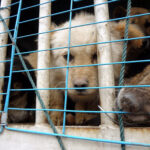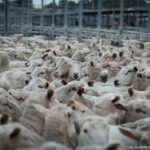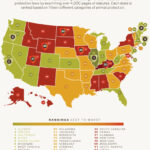Animal cruelty remains a disconcerting paradox in contemporary society. This divergence in moral justification has led to widespread inconsistencies in public perception and legal ramifications. To delve deeply into the conundrum of why some individuals seem to escape reprimand for their actions towards animals while others face stringent consequences, we must examine cultural norms, the legal framework, and the moral compass that guides human behavior.
It is vital first to acknowledge the multifaceted nature of animal cruelty itself. It encompasses various forms, from overtly violent acts, such as physical abuse and torture, to insidious neglect, which often goes unnoticed. However, varying cultural contexts can dictate where the line is drawn in terms of acceptable existence versus the abhorrent treatment of animals.
At the core of this issue lies cultural perception. In some societies, certain animals are regarded primarily as resources—be they for labor, clothing, or consumption. This utilitarian approach influences public sentiment and, in turn, dictates legal frameworks that may indirectly condone or overlook egregious acts of mistreatment. In contrast, societies that uphold animals as sentient beings deserving of protection adopt a more stringent stance against any form of cruelty. This discrepancy in values raises pertinent questions about ethical consistency.
Within the context of the legal framework, the disparity becomes even more pronounced. Legal statutes regarding animal rights vary significantly across different jurisdictions. In some regions, laws may offer robust protection for companion animals like dogs and cats while failing to address the treatment of farm animals or wildlife adequately. Such inconsistencies highlight an unsettling truth: the law often prioritizes certain species over others, leading to an uneven landscape of justice for animals.
Consider the case of farm animals, who endure heinous conditions in factory farming operations. The modern agricultural industry often operates with the mindset that profit supersedes humane treatment. This perspective is not universally accepted, of course; many activists campaign for the welfare of these animals, advocating for improvements in living conditions and legislative reform. Yet, the entrenched norms surrounding agricultural practices pose significant barriers to change.
Moreover, celebrity culture and media portrayal play a pivotal role in shaping societal attitudes towards animal cruelty. High-profile cases involving animals, particularly when linked to celebrities, command public attention and incite outrage. The response to such cases can starkly contrast with lesser-known incidents of cruelty that may occur without any media spotlight. This disparity raises ethical questions about empathy and advocacy based on visibility rather than the inherent value of the suffering being inflicted, regardless of its context.
To complicate matters further, psychological factors come into play. Many individuals with histories of animal cruelty exhibit behaviors rooted in deep-seated issues such as anger, frustration, or a desire for control. These individuals may not share the same emotional connections to animals that many people do, leading to a perceived disconnect between human empathy and animal suffering. This psychological schism can result in justification for hurtful actions that some may deem acceptable while others vehemently oppose.
The question of speciesism—a term used to describe discrimination based on species—also permeates the discourse surrounding animal cruelty. Speciesism manifests when certain animals are prioritized over others based solely on their relevance to human interests. For instance, a person may view the killing of a beloved pet as abhorrent, yet may not express the same level of concern for a cow being led to slaughter for commercial purposes. Such inconsistencies reveal deep-rooted biases and selective empathy within societal attitudes.
Another critical dimension involves the influence of socio-economic factors. Individuals from different socio-economic backgrounds often possess divergent values and education levels concerning animal rights. Wealthier individuals may have the resources to advocate for animal welfare effectively, whereas those facing economic constraints might prioritize survival over the consideration of animal rights. The irony lies in the reality that those who may be most vulnerable are often the least equipped to defend the vulnerable members of the animal kingdom.
Furthermore, the relationship between tradition and modernity cannot be ignored. Some cultures possess longstanding traditions that include the use of animals for entertainment, experimentation, or consumption. While some members of these societies may argue that such practices are integral to their identity, others might view them through a modern lens, advocating for change and compassion. Bridging this cultural divide necessitates a nuanced approach that respects tradition while fostering the moral evolution of societal values.
In conclusion, the moral landscape surrounding animal cruelty is riddled with contradictions and complexities. The question of why certain individuals are allowed to engage in cruel behavior while others are prosecuted is multifaceted, rooted in cultural, legal, psychological, and socio-economic dynamics. It beckons a thorough reevaluation of the values that govern our treatment of animals, emphasizing the necessity for a unified ethical stance that transcends arbitrary distinctions of worth among species. By fostering greater awareness and promoting a broader understanding of animal rights, society can better address the inherently inequitable treatment that persists across various contexts.
Ultimately, the journey towards eradicating animal cruelty requires a collective effort—a call to action for individuals, communities, and governments to champion the cause of those who cannot speak for themselves, ensuring that every creature, regardless of its species, is afforded the respect and compassion it deserves.







